Monastic orders have played a prominent role in Budapest's history: in addition to their religious activities, they have influenced science, culture, literature and the fine arts. While several of these monastic orders are still present in Budapest, historically, the world of Pest, Buda, Óbuda and the surrounding smaller settlements was characterized by an outstanding diversity and richness of monastic life. Traces and memories of this can be found in many parts of the city, from the Buda Hills to the Pest city centre.
Margit Island is particularly rich in such connections: in addition to the ruins of the Dominican convent in which Saint Margaret lived, the remains of a former Franciscan church, a small chapel, still connected to the Premonstratensians, Saint Michael's Chapel can also be found on the Island.
The Order of Canons Regular of Prémontré was founded by Saint Norbert of Xanten, who took his solemn vow at Christmas 1121 in the Prémontré Valley in western France.
The order settled in Hungary quickly in the same century. Tradition holds that King Stephen II invited the order to settle on Váradhegyfok, a hill near Nagyvárad, present-day Oradea in Romania.

King Stephen II in the Thuróczi Chronicle.
By the time of the Mongol Invasion in 1241–1242, the order had 24 monasteries around the country, including the Provostship of Archangel Saint Michael on Rabbit Island, now known as Margit Island.
The small provostship made a significant fortune through royal donations. Andrew II and Béla IV donated large estates to the Order in Hungary. However, their influence soon diminished with the founding of the Dominican nunnery. Nevertheless, the Premonstratensians remained on the Island until the Battle of Mohács (1526) and even slightly longer. They fled the area permanently after Buda fell under Ottoman rule in 1541.
The history of the provostship came to an end, and the chapel and its surrounding building slowly began to decline – by the 20th century, only the south-western wall of the chapel remained standing. However, an unexpected event in 1914 changed the buildings fate. The 25 July 1914 issue of Az Est reported:
“Yesterday, a cyclone roared through Margit Island with such terrible force causing so much damage that the island is now barely recognisable. Gardeners report that forty-five centuries-old trees have been torn from the ground. As they fell, these large trees pulled smaller plants with them. Their trunks now line the island like corpses."
However, the destruction led to an outstanding find. Among the roots of one of the fallen trees, a large, completely intact bell was found and transported to the National Museum.
The events led to archaeological excavations in the area. However, due to the First World War, meaningful progress was only made in the 1920s when the public company renting Margit Island was forced to landscape the island by the National Committee of Historical Monuments.
Photo taken during the excavation of the ruins of the chapel (Photo: Ország-Világ, 22 November 1925)
The archaeological works were led by Szilárd Zielinszky, Kálmán Czabalay and Kálmán Lux, who were commissioned by the Budapest Public Works Council. Contemporary press reports also highlighted the name of Alajos Páskuj. At the time, rumours that a monastery of the Knights Templar has stood on the Island spread, but Kálmán Lux firmly refuted these in the press. The public imagination was also captivated with a tombstone found on the site that read: “Hic iacet Valentinus” - “Here rests Valentine.” The tombstone became part of the stone collection of the Hungarian National Museum.
After excavations in the 1920s, the magazine Épitő Ipar – Építő Művészet reported a decision on 1 August 1930:
“The ruins of Margit Island are to be restored. The Budapest Public Works Council has included the restoration of the ruins on the island in its programme. The 12th-century church of the Premonstratensians will be rebuilt in its original form. Work is likely to begin as early as next spring.”
A "visual" of the chapel to be rebuilt from the 25 December 1930 issue of Magyarország
From the 25 December 1930 issue of Magyarország readers learned that Kálmán Lux had prepared the plans to rebuild the chapel, and construction had begun. The paper also published a picture of the future chapel and emphasized that the Budapest Public Works Council has decided to rebuild the chapel on the occasion of Miklós Horthy's jubilee as governor. Later sources also reported that the governor's wife made significant financial contributions towards the construction project.
Works lasted about eighteen months and were completed in September 1932. The chapel was consecrated by the Prince Prelate Jusztinián György Serédi on 19 September 1932.
Mrs Horthy, a major supported of the project, was a guest of honour at the event (Photo: Tolnai Világlapja, 5 October 1932)
Mrs Horthy attended the event alongside other eminent guests. Several members of the Order of Canons Regular of Prémontré aided the Archbishop during the ceremony.
Iván Rakovszky, the President of the Public Works Council, gave a speech in which he raised Governor Miklós Horthy and his wife and detailed the history of the chapel, the archaeological excavations and construction.
The chapel was consecrated by Cardinal Justinian Serédi, prince-primate, his secretary, Blessed Zoltán Meszlényi, who later died a martyr's death (Photo: Képes Pesti Hirlap, 30 September 1932).
After the speech given by the President of the Public Works Council, Serédi consecrated the chapel, presided over a silent Mass, and then gave a speech encouraging those present to follow the faith of their ancestors.
The Saint Michael's Chapel on Margit Island in the painting of the painter János Tibai Takács (Source: Picture Supplement to Magyarság, 2 October 1932)
The chapel consecrated by the prince-primate was placed under the authority of the Óbuda-Újlak Parish, which was tasked with ensuring worship in the building.
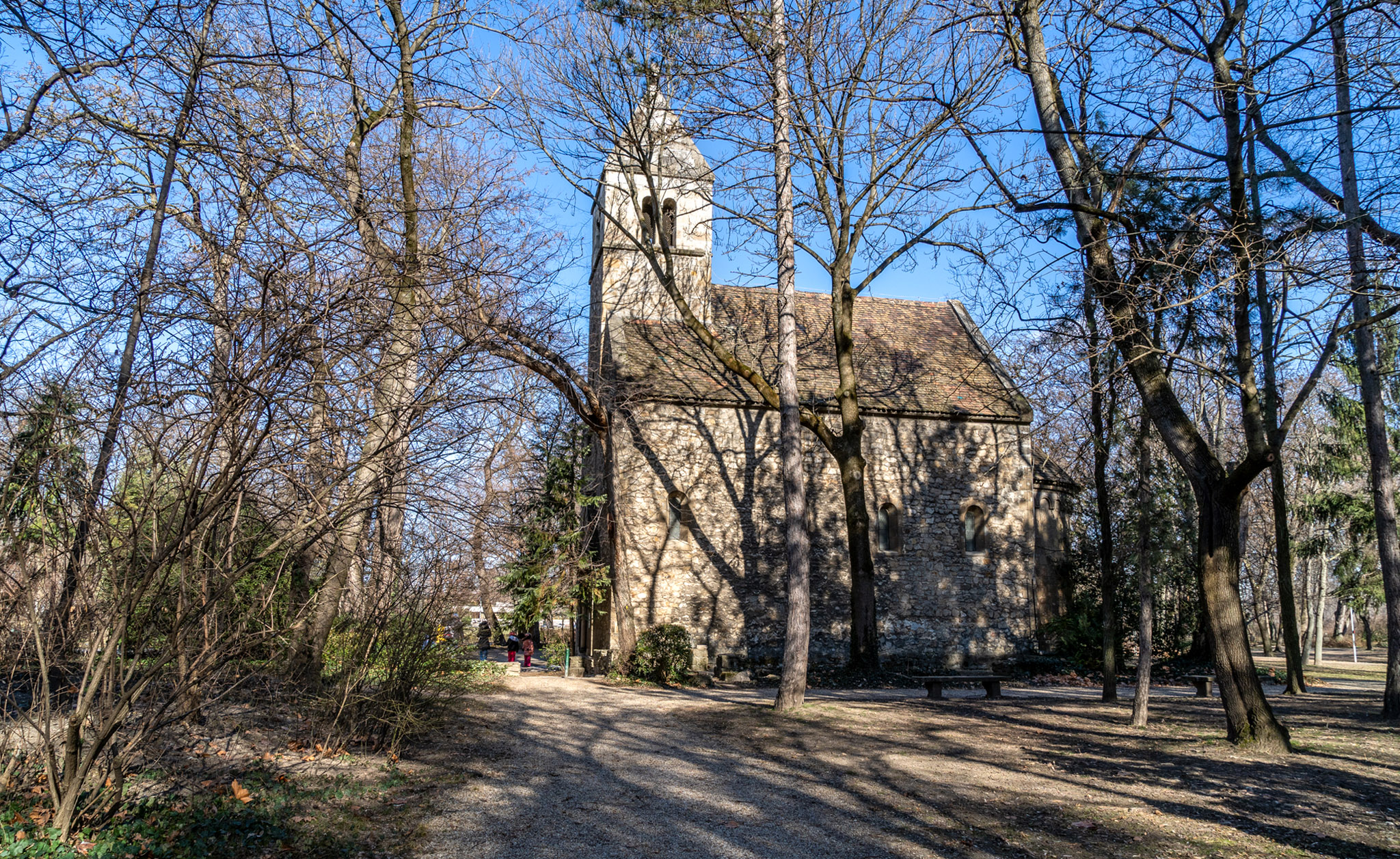
The chapel today, from the south-west (Photo: Balázs Both/pestbuda.hu)
Standing before the building completed in 1932, one almost believes they are entering a mediaeval building. Kálmán Lux was able to reconstruct the floorplan, including the tower, from the excavated ruins with great precision, and his use of materials is also authentic. The restoration of the ruins on Margit Island should be seen as a high-quality work of Hungarian conservationism.
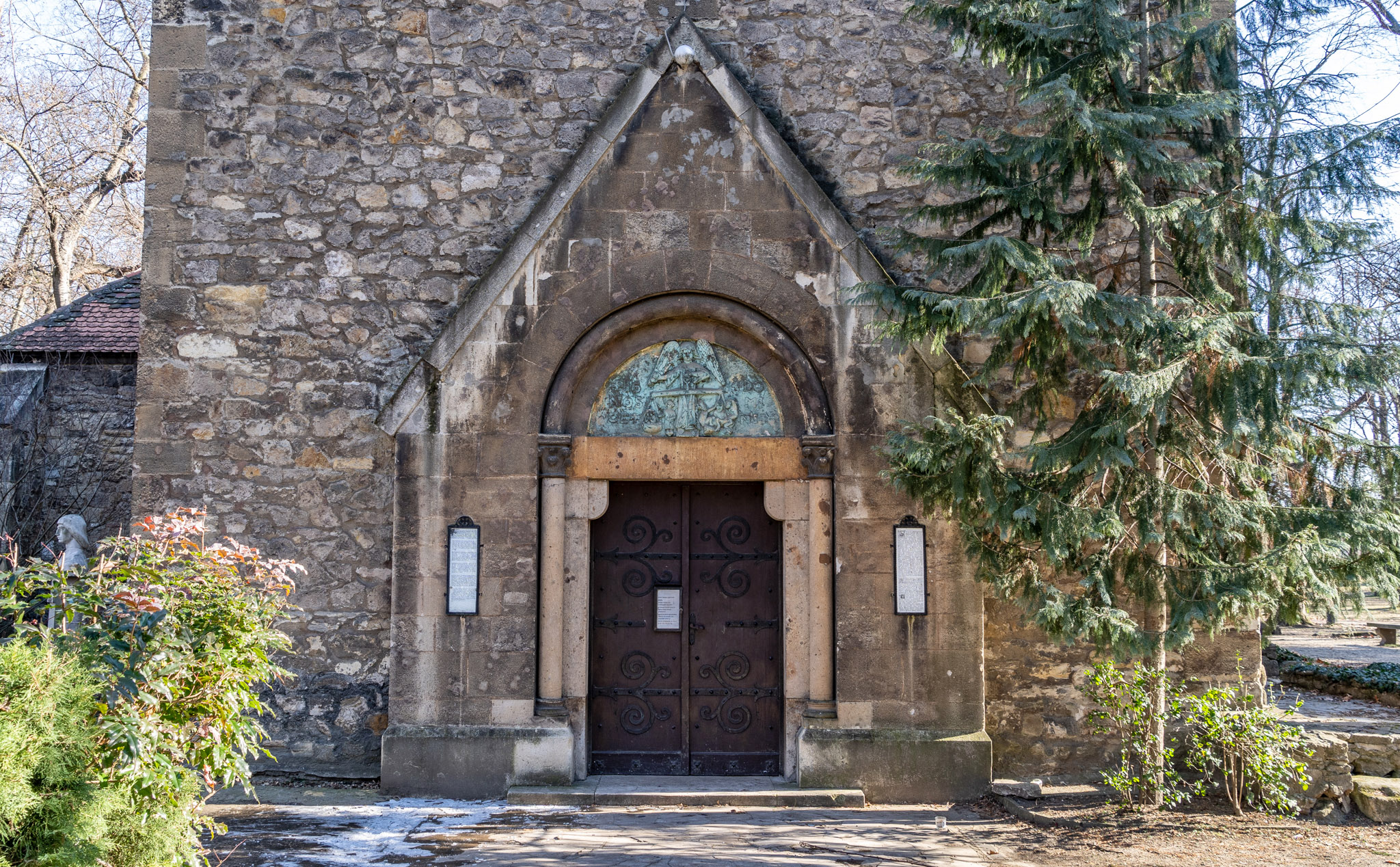
Entrance to the chapel today (Photo: Balázs Both/pestbuda.hu)
The painter Dezső Kölber and the sculptor Jenő Körmendi-Frim created the artworks for the interior of the chapel. The former created the stained glass windows of the sanctuary, which depict Saint Michael. The latter worked on the main altar, the monstrance, the font, and the chapel's memorial plaque.
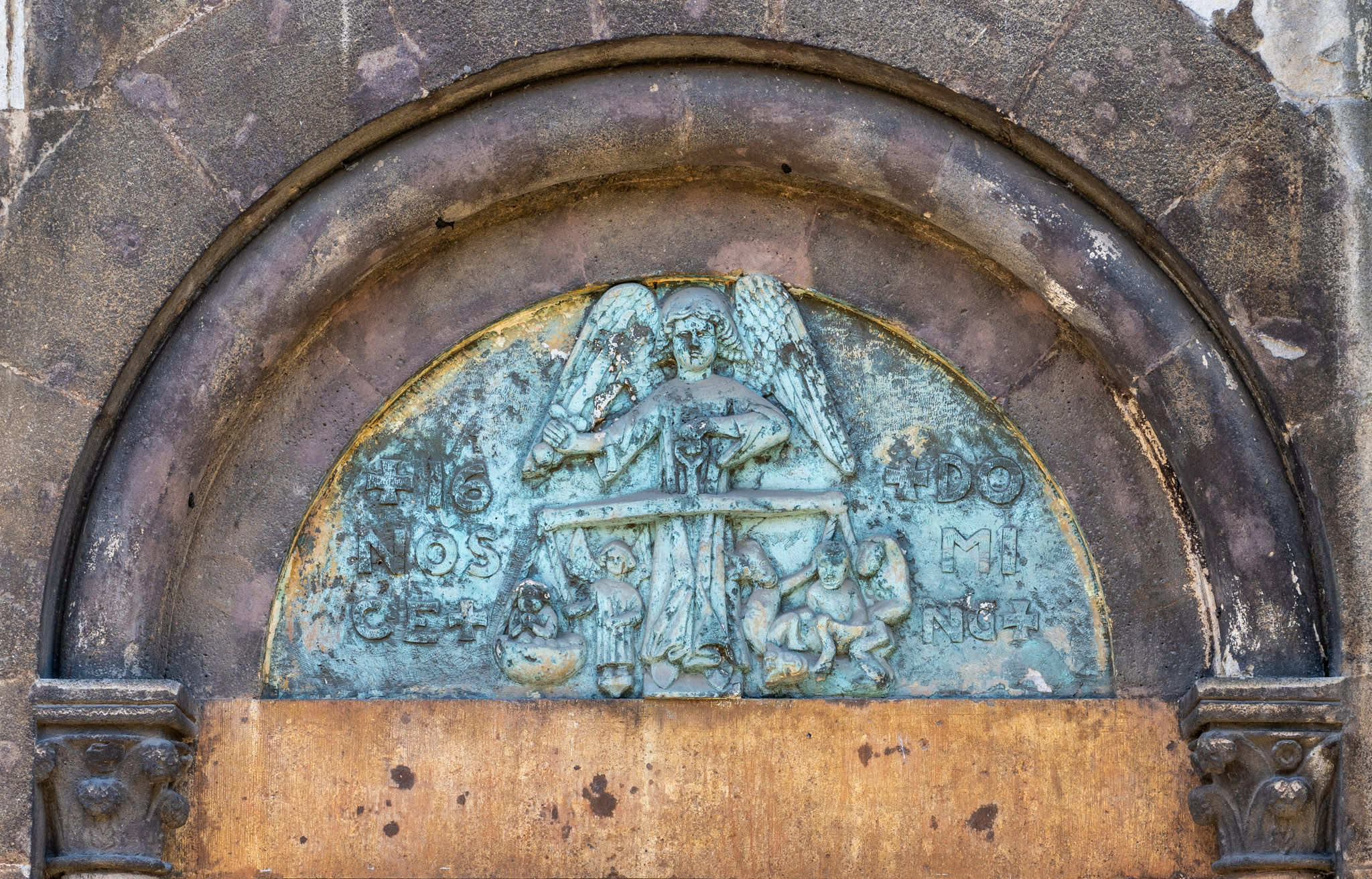
The final judgement. Relief above the entrance to Saint Michael's Chapel (Photo: Balázs Both/pestbuda.hu)
Jenő Körmendi-Frim also carved the relief above the entrance to the chapel depicting the final judgement. This relief is a copy of the gate carvings of a chapel in Kassa (Košice, Slovakia), also named after Saint Michael, created around 1350. However, while the original is stone, the version on Margit Island is made of bronze. The words “Ignosce Domine,” meaning "Pardon us, Lord", surround the relief.
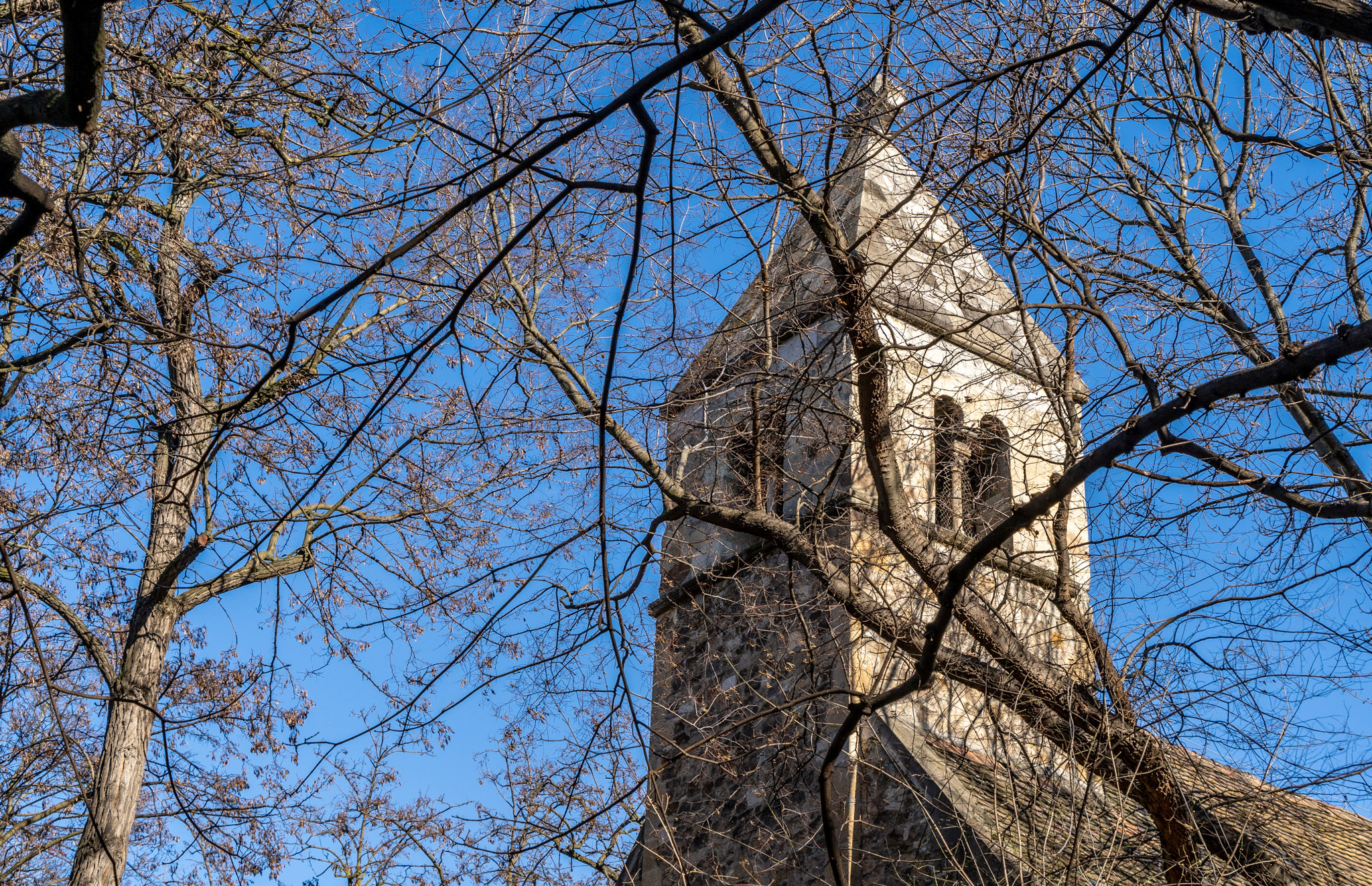
The tower of Saint Michael's Chapel on Margit Island today (Photo: Balázs Both/pestbuda.hu)
The tower of the chapel is adorned with a simple stone spire. The tower rests on the chapel's west wall and on pillars extending into the church's interior. The location of these pillars allowed Kálmán Lux to reconstruct the tower, as he found their remains during the archaeological excavation. Another special feature of the tower is its bell: the oldest bell in Budapest, which was found intact among a tree's roots after the above-mentioned 1914 storm. The inscription of the 15th-century bell is in German and reads in translation: "Help us God, Mother Mary lead us, simple folk with your advice, cast by Master János Strous."
And as such, the name of the bell caster who created the bell installed in the tower during the 20th-century reconstruction is known.
Cover photo: Saint Michael's Chapel on Margit Island seen from the sanctuary's side (Photo: Balázs Both/pestbuda.hu)

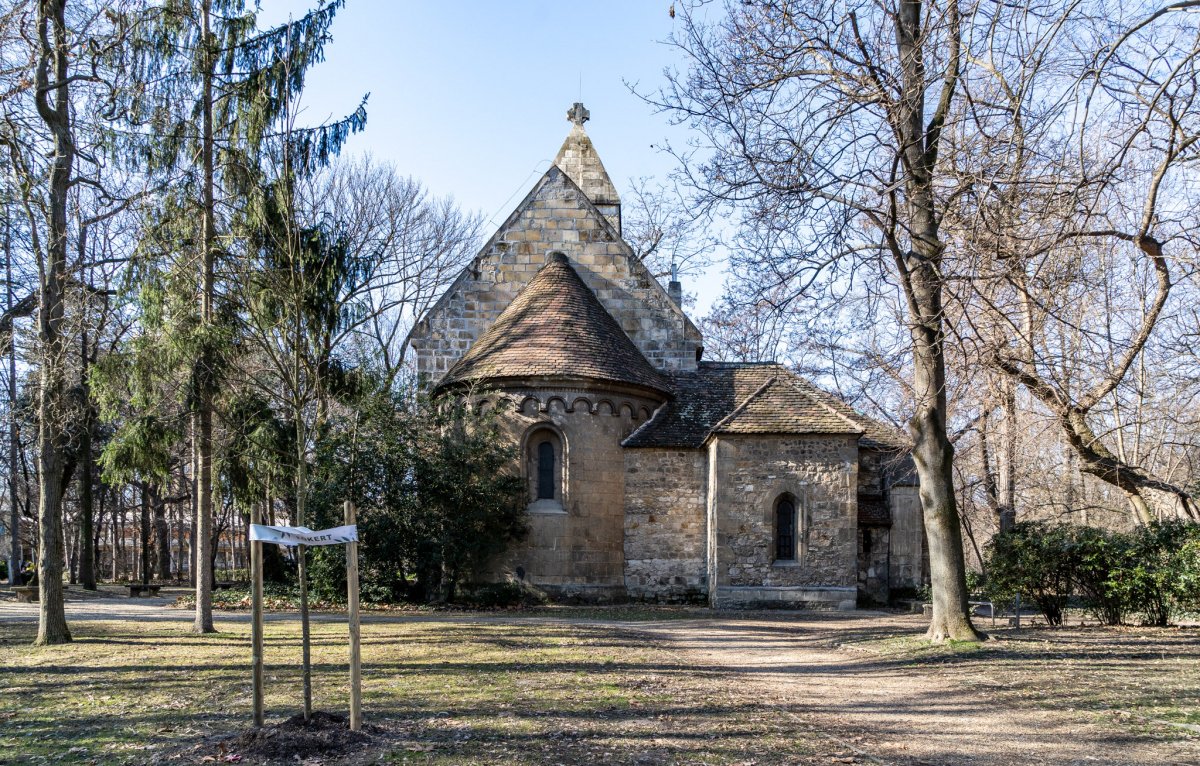







Hozzászólások
Log in or register to comment!
Login Registration